Parameters that determine characteristic impedance
The characteristic impedance of the substrate changes depending on the dimensions and material characteristics of each part of the substrate cross section shown in Fig.1. Since all of these include manufacturing errors, errors also occur in the characteristic impedance. Controlling the characteristic impedance requires the intervention of engineers to control the tolerances during multiple manufacturing steps of the board.
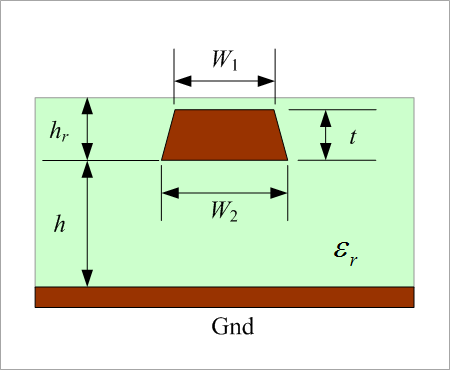
In Figure 1, the parameters that affect the characteristic impedance are the pattern widths W1 and W2, the pattern thickness t, the distance from the pattern ground h, and the dielectric constant εr of the resin. The extent to which these change varies depending on the board manufacturer, but we assume that all of them change by ±20%.
Parameter error and characteristic impedance
Figures 2 to 5 show the analysis of the change in characteristic impedance when each parameter is varied by ±20%. Regarding the pattern width, W2-W1 is set to 10um, and the change in W2 is shown.
For example, when the pattern width changes by ±20%, the characteristic impedance changes by about ±7%. ±2.5% for pattern thickness, ±10% for distance from ground, and ±10% for dielectric constant.
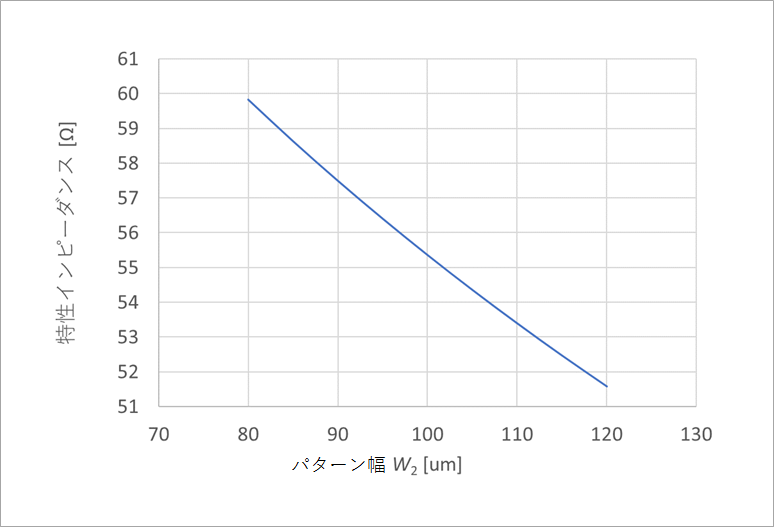
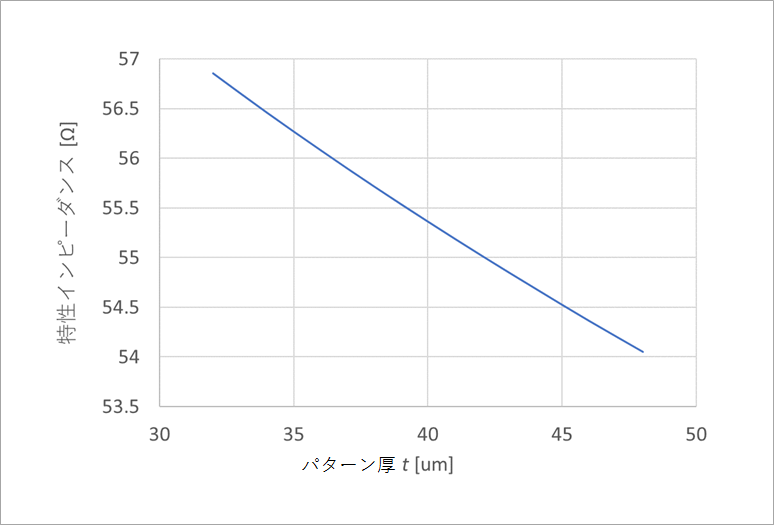
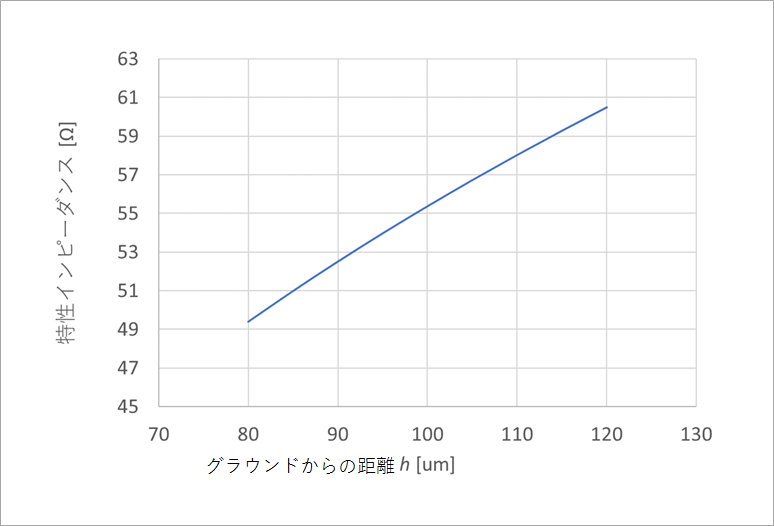
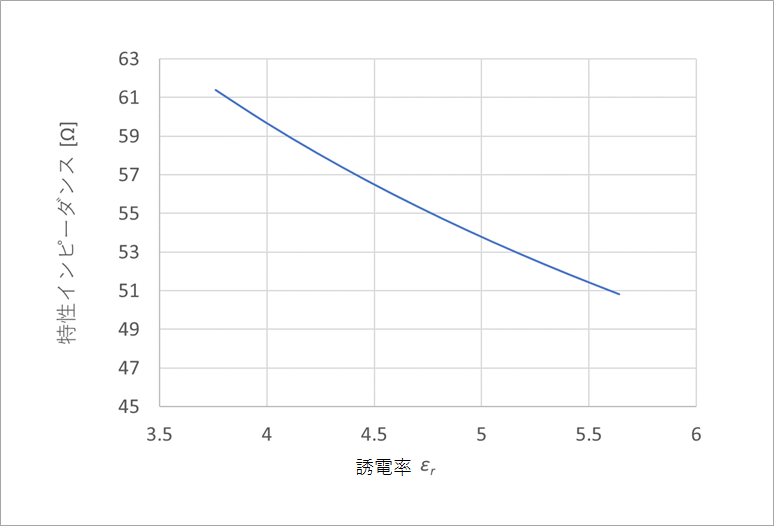
error distribution
Figure 6 shows the distribution of these changes assuming they are normally distributed.
The total in Figure 6 is the overall distribution for changes in these four parameters, with a change of about ±15%. In the actual calculation, 100,000 random numbers are generated and the distribution is obtained, so there are some irregularities in the distribution. From Figure 6, if each parameter changes by ±20%, the characteristic impedance error will be about ±15%. As mentioned at the beginning, the extent to which each parameter changes depends on the board manufacturer, but you should be able to understand the general trend.
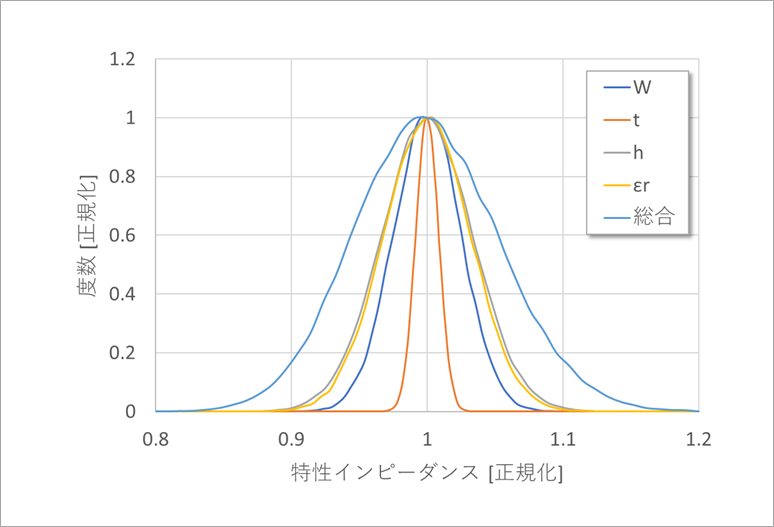
TDRMore
Characteristic impedance is usually measured by the TDR (Time Domain Reflectmetry) method. If you look closely at the TDR waveform, you will notice that the characteristic impedance reading of the device under test (DUT) is sloping. This slope varies with the length of the DUT.
Figure 7 is an analysis of this reading. Which timing is the correct reading for the characteristic impedance? In fact, it is 46 Ω in Figure 7 because it is the moment of change. If this is read at the final timing after waiting until it stabilizes, the characteristic impedance will be read about 10% larger depending on the length of the DUT. Unnecessary errors occur here, resulting in a board with low characteristic impedance.
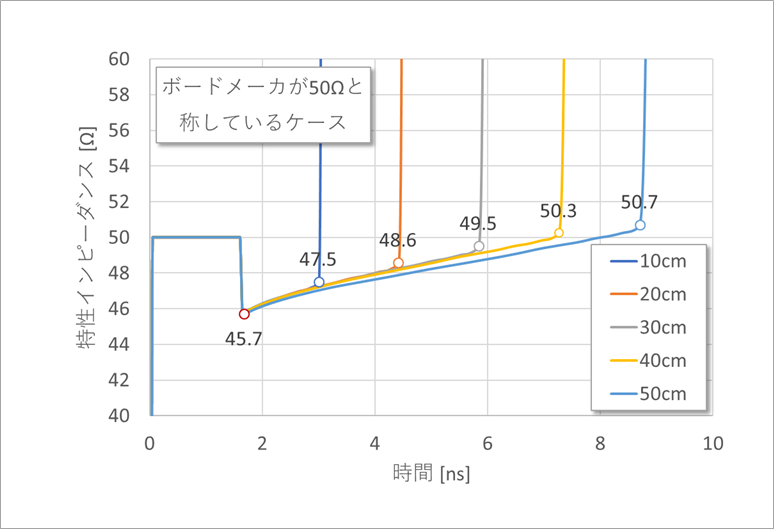
Influence of Errors in Characteristic Impedance
By the way, what effect does the characteristic impedance error have on the waveform?
Figure 8 shows normalized far-end amplitude versus ratio of characteristic impedance to double-ended termination resistance for an 85Ω differential transmission. If the characteristic impedance of the line is 20% less than the specified value, the far end rise amplitude will be 1.2% less.
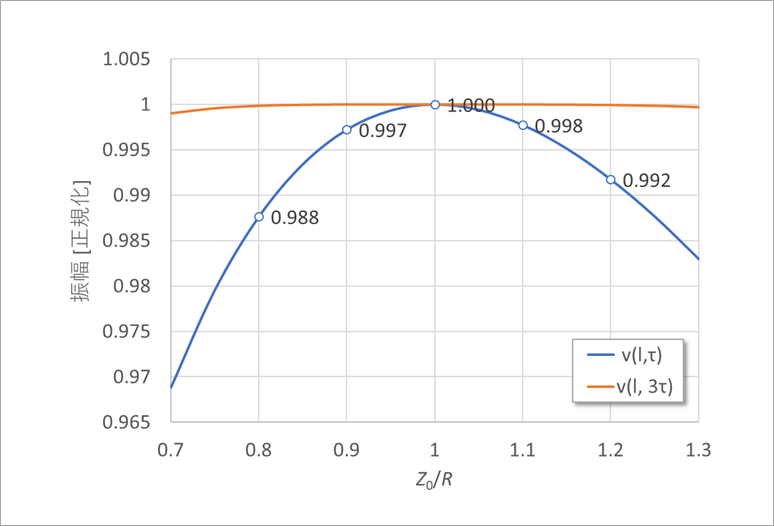
Figure 9 shows the reflected waveform when the characteristic impedance is ±20%.
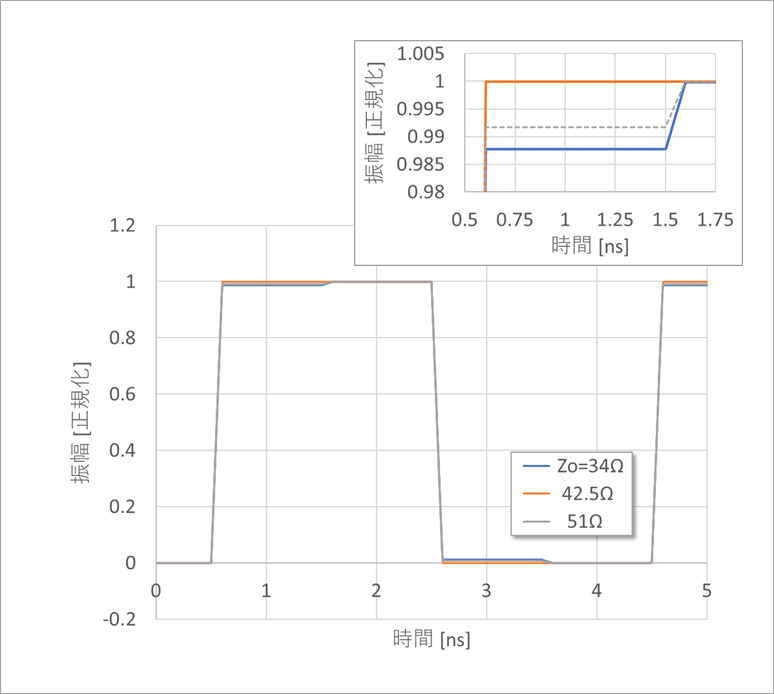
Considering these factors, it is important to properly analyze and determine whether or not characteristic impedance control is really necessary.
What is Yuzo Usui's Specialist Column?
It is a series of columns that start from the basics, include themes that you can't hear anymore, themes for beginners, and also a slightly advanced level, all will be described in as easy-to-understand terms as possible.
Maybe there are other themes that interest you!
